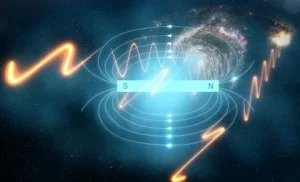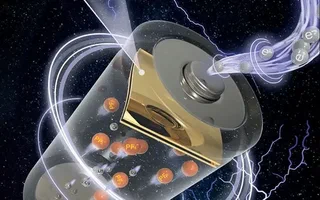From the subtle hum of your computer to the vibrant glow of city lights, electromagnetism silently powers the modern world, shaping the way we live, communicate, and innovate. Understanding the principles of electromagnetism unveils the key to unlocking a plethora of technological advancements that have become indispensable in our daily lives.
Introduction to Electromagnetism
What is electromagnetism?
Electromagnetism is a fundamental force of nature that encompasses both electric and magnetic fields. These fields are interrelated and manifest through the movement of charged particles.
Historical background
The exploration of electromagnetism dates back centuries, with pioneers like Michael Faraday and James Clerk Maxwell laying the groundwork for our understanding of electromagnetic phenomena. Faraday’s experiments with electromagnetism led to the development of electromagnetic induction, a principle crucial for modern power generation.
The Role of Electromagnetism in Modern Society
Electromagnetic spectrum
The electromagnetic spectrum encompasses a wide range of frequencies, from radio waves to gamma rays. Each segment of the spectrum has unique properties and applications, making it integral to various technologies.
Applications in technology and everyday life
Electromagnetism permeates numerous aspects of modern society, from household appliances to telecommunications infrastructure. Without it, many of the conveniences we take for granted would cease to exist.
Harnessing Electromagnetism for Power Generation
Electromagnetic induction
The process of electromagnetic induction, discovered by Faraday in the 19th century, forms the basis of electrical power generation. By moving a conductor through a magnetic field or vice versa, an electromotive force is induced, generating electricity.
Alternating current (AC) vs. direct current (DC)
The battle between AC and DC power systems has shaped the evolution of electrical engineering. While DC was initially favored by Thomas Edison, Nikola Tesla’s development of AC systems revolutionized power distribution, paving the way for modern electrical grids.
Power plants and generators
Power plants harness various energy sources, such as coal, natural gas, nuclear, and renewable resources, to generate electricity through electromagnetic processes. Generators convert mechanical energy into electrical energy, providing the power that drives society.
Electromagnetism in Communication Systems

Wireless communication
The advent of wireless communication has transformed the way we connect with one another. From smartphones to Wi-Fi networks, electromagnetic waves enable seamless transmission of data over vast distances.
Radio waves and antennas
Radio waves, a form of electromagnetic radiation, serve as the backbone of radio and television broadcasting. Antennas receive and transmit these waves, facilitating communication across the globe.
Satellite communication
Satellites orbiting the Earth rely on electromagnetic principles to relay signals for television, internet, and navigation systems. These artificial satellites have become indispensable tools for global communication and surveillance.
Electromagnetic Applications in Transportation
Electric vehicles
The automotive industry is undergoing a paradigm shift with the rise of electric vehicles (EVs). By utilizing electromagnetic motors powered by batteries, EVs offer a cleaner and more sustainable alternative to traditional combustion engines.
Magnetic levitation (maglev) trains
Maglev trains use powerful electromagnets to levitate above the tracks, eliminating friction and allowing for ultra-fast travel speeds. This futuristic transportation technology promises to revolutionize intercity transit.
Electromagnetic braking systems
Electromagnetic brakes provide precise control and efficient stopping power in trains and automobiles. By leveraging electromagnetic forces, these braking systems offer improved safety and performance compared to traditional friction brakes.
Electromagnetism in Medicine
Magnetic resonance imaging (MRI)
MRI machines utilize powerful magnets and radio waves to produce detailed images of the body’s internal structures. This non-invasive imaging technique has become indispensable for diagnosing a wide range of medical conditions.
Electromagnetic therapy
Electromagnetic therapy encompasses various treatment modalities that harness electromagnetic fields to stimulate healing processes within the body. From pain management to tissue regeneration, these therapies offer promising avenues for medical intervention.
Environmental Impacts and Challenges
Energy efficiency
As society becomes increasingly reliant on electromagnetism for power generation and transportation, the need for energy efficiency becomes paramount. Developing sustainable technologies and minimizing waste are essential for mitigating environmental impact.
Electromagnetic pollution
The proliferation of electronic devices and wireless infrastructure has raised concerns about electromagnetic pollution. Striking a balance between technological advancement and environmental stewardship is crucial for preserving the health of our planet.
Future Trends and Innovations
Advancements in wireless charging technology
Wireless charging technology continues to evolve, offering convenient solutions for powering electronic devices without the need for cables. From smartphones to electric vehicles, wireless charging promises a future where energy is seamlessly integrated into our surroundings.
Electromagnetic propulsion systems
Researchers are exploring the potential of electromagnetic propulsion systems for space travel and terrestrial transportation. By harnessing electromagnetic forces, these propulsion systems could revolutionize the way we explore the cosmos and navigate our planet.
Sustainable energy solutions
The quest for sustainable energy sources drives innovation in electromagnetism, from renewable power generation to energy-efficient technologies. Embracing clean energy solutions is essential for addressing climate change and securing a brighter future for generations to come.
Conclusion
Electromagnetism lies at the heart of the modern world, powering our technological advancements and shaping the way we interact with the universe. From communication systems to transportation and medicine, its influence is pervasive and transformative. By harnessing the principles of electromagnetism responsibly, we can continue to propel humanity forward while preserving the delicate balance of our planet.
FAQs
1. How does electromagnetism affect everyday life?
Electromagnetism plays a vital role in numerous aspects of modern life, from powering electronic devices to enabling communication and transportation systems.
2. What are some examples of electromagnetic applications in medicine?
Magnetic resonance imaging (MRI), electromagnetic therapy, and transcranial magnetic stimulation (TMS) are just a few examples of how electromagnetism is used in the field of medicine.
3. What are the environmental concerns associated with electromagnetism?
Electromagnetic pollution, energy consumption, and the disposal of electronic waste are some of the environmental challenges associated with the widespread use of electromagnetism.
4. How is electromagnetism utilized in transportation?
Electromagnetism powers electric vehicles, facilitates magnetic levitation (maglev) trains, and enables electromagnetic braking systems in automobiles and trains.
5. What are some future trends in electromagnetism?
Advancements in wireless charging technology, electromagnetic propulsion systems, and sustainable energy solutions are shaping the future of electromagnetism and its applications.












